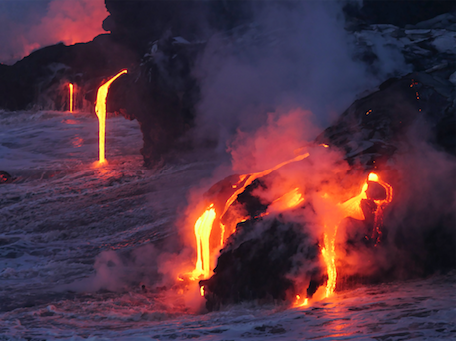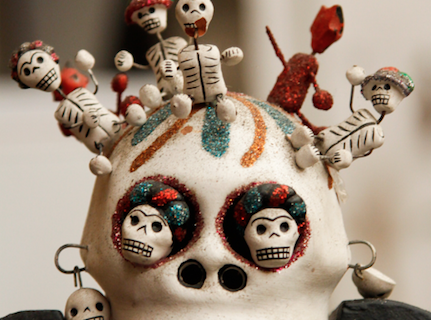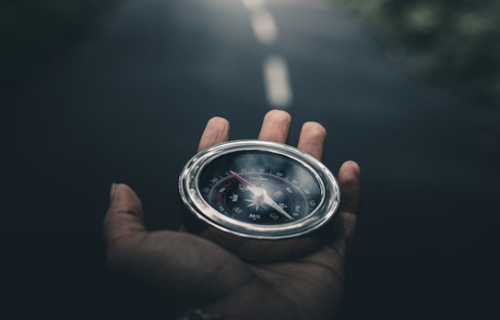
The Transformative Power of Telling Your Story
We are volcanoes. When we women offer our experience as our truth, all the maps change. There are new mountains. That’s what I want–to hear you erupting. You Mount St. Helenses who don’t know that power in you–I want to hear you…If we don’t tell our truth, who will?
-Ursula K. Le Guin
Folks often tell me they don’t know how or why I share such personal things in my writing with the wide world. Aren’t I scared of being judged? Aren’t I afraid my heart will get squashed by the insensitive people of the world if I tell my story? The honest answer to these questions is: Yes. However, after decades of sitting in sacred circles with other humans who are also seeking to heal their histories, I’ve learned some things that I never would have, had brave people not shared their stories candidly. I literally would not be here today without their stories. It wasn’t until I started practicing shamanic medicine and attending ceremony that I first heard people speak candidly about what was really going on in their lives in the presence of others who knew how to hold space. After a time of practicing this and seeing that no one was trying to fix me, I too softened into a depth of sharing I wasn’t accustomed to. It was such a relief to tell the truth of what I was going through.
In Talking Stick sharing circles, protocol prevents others from interrupting the person holding the stick. The person can hold this sacred item for as long as they need to in order to fully express what’s generally unspeakable in mainstream settings. The rest of us hone our listening skills by taking in their story deeply into our beings so we can learn from the other’s experience. We practice silencing the ego part of our psyches that wants to craft a retort to diminish what someone is saying. In short, our job is to let the story change us and start to transform the ways we have created our inner worlds and built up our identities into more life-giving patterns.
Why is this important? Because the way we have constructed our reality on the inside is what will be reflected back to us on the outside by society. Though uncomfortable, freedom requires humans to do the tough inner work of deconstructing all of the patriarchal boxes and rules we have bought into unconsciously simply by being born into this setting. We construct our world on the inside in order to respond to the outer reality we are living. As we grow to adulthood, if we are to live authentic lives, these boxes must be destroyed along with the armour we needed as children when we could not yet protect ourselves well. It’s hard to live without a protective shell at first, but as we become more of who we are and implement healthy relational skills with good boundaries, we can eventually learn to relax into life and the challenges it brings.
In shamanism, one of the first teachings we receive is that we do not all perceive the world in the same way. Depending on what body, culture, language, and geography we are born into, we will experience life differently. Many global problems exist because we’ve believed the illusion that everyone is walking the same path in the same way with access to the same opportunities. This is simply not true. So many of us live the reality of our inner lives in secret, showing the outside world only what we think others want to see. For some, this is a matter of life or death. (It is still illegal to be gay in many parts of the world, for example, and in those cases hiding our true selves is prudent. Thanks to the Internet, it is becoming easier for marginalized folks to connect with like-minded people.) It is in sharing stories in safe settings that we realize we are not alone in our struggles and we gain knowledge from noticing how other folks successfully navigated tricky situations in their own lives. If telling your story to many people feels scary, telling the truth to even one trustworthy person is all that is needed for healing to initiate.
We are living in a time where absorbing the truth of other folks’ lived experiences–particularly if they are vastly different from our own–is vital to our evolution as a species. In her ground-breaking memoir “The Dance of the Dissident Daughter: A Woman’s Journey from Christian Tradition to the Sacred Feminine,” Sue Monk Kidd reminds us that when we live in our own bubbles, we forget that there is no separation between humans. As part of nature, what happens to one of us effects all of us on some level:
The world needs a new ecological wisdom and the honoring of the earth and body that the Divine Feminine implants. It needs to embrace the consciousness of we, the image of the web, the interconnection and interrelatedness that are central to women’s experience and that Sacred Feminine experience only deepens…the world needs the vision and courage to dismantle hierarchies of power. It needs to be faced with its injustices, to hear voices that speak for the voiceless and powerless. It needs conscious women. Conscious men, too.
George Dei wisely states that “[i]nclusion is not bringing people into what already exists; it is making a new space, a better space for everyone.” We simply cannot dream a new world into being that is equitable for all humans and sustainable for the earth if we are not willing to listen to voices of marginalized peoples and tend to what is unhealed that comes up in us in response. In other words, each of us need to work on healing intergenerational trauma. Like the fiery Hawaiian volcano goddess, Pele, we must allow the stories to burn away anything that no longer works in our lives at this time if we hope to leave our descendants with a future on this beautiful planet we live on.
I want to add a disclaimer here so folks aren’t thinking they can run around telling everyone who will listen their very vulnerable story: Not everyone will receive it well. Some will even mock you. Take care in who you tell and under what circumstances. I know that warning sounds like it contravenes the advice I gave at the beginning of this article; however, I am careful about the stories I share and how I present them to readers. I have some guidelines I follow that ensure that the people I love most and my own inner kid are cared for in how I share. For example, I never tell parts of my past I haven’t healed or processed fully first with the wide world. From a shamanic point of view, it’s important to tell power stories that move folks toward positive change–not victim stories. I know that I am ready to share my story more widely when I can finally tell it as a power story. In the book “Women’s Power Stories: Honouring the Feminine Principle of Life,” power stories are described in more detail:
The ego is not present in a power story telling. We tell power stories from our lives to bring inspiration and hope to others. Power stories speak of possibilities we may not have thought could exist and teach us how to reach for all we can be without being at the effect of our life journey. When a power story is told, the heart is open. The teller is not invested in what she says or the impact the power story will have on the audience.
I save my most personal details for sacred ceremonial circles where my story is kept confidential. I know participants are not going to go out blabbing about what I’ve just shared.
Ceremony provides a safe container and context for the stories we tell. We all show up with the intention to heal–not to gossip about, judge, or shame others. Ceremony is not a spectacle for entertainment. It’s not a TV show or a movie; it’s real life with real consequences for folks. It takes a ton of courage for someone to come forward with a story about abuse, addiction, injustice, abortion, divorce, adoption, still births, extramarital affairs, and other “secrets” that have no safe place to land in our society. We need to allow more folks to share this immense burden by creating more of these sanctuaries led by trained, compassionate people with good boundaries. This work is anything but selfish. In shamanic practice this is the most important work we can do to transform the world. Our individual spiritual growth is intricately linked with social and environmental justice. Charles Eisenstein states this principle succinctly when he says that “[u]ltimately, work on self is inseparable from work in the world. Each mirrors the other; each is a vehicle for the other. When we change ourselves, our values and actions change as well.”
Jennifer Engrácio has been a student of shamanism since 2005. Jennifer is a certified teacher who has worked with children in many different education settings since 2001. She is a certified shamanic coach, reiki master, and lomilomi practitioner; in addition, she runs Spiral Dance Shamanics. Originally from Vancouver, Canada, she now lives in Calgary, Canada with her life partner.
This article appeared in the July 2020 edition of Pagan Pages Magazine.
Recommended Resources
Book: “Women’s Power Stories: Honouring the Feminine Principle of Life” Edited by Jennifer Engrácio and Carell Mehl
Book: “Love Warrior” by Glennon Doyle
Book: “The Dance of the Dissident Daughter: A Woman’s Journey from Christian Tradition to the Sacred Feminine” by Sue Monk Kidd
TED Talk: The Power of Vulnerability by Brené Brown
TED Talk: Why Your Critics Aren’t the Ones Who Count by Brené Brown
TED Talk: I’ve lived as a man & a woman — here’s what I learned by Paula Stone Williams


